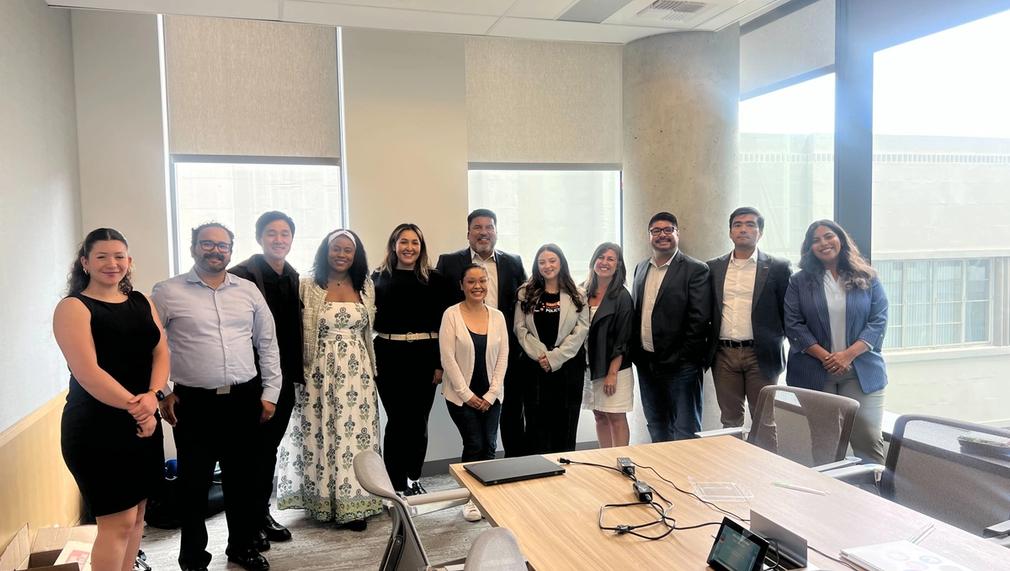Advancing Economic Opportunity for Immigrant Communities
The California Immigrant Policy Center (CIPC) co-leads the Economic Mobility for All (EM4A) coalition, advancing inclusive economic opportunities for immigrants in Los Angeles. This project will engage local partners in statewide advocacy to secure a $15M annual public-private investment in the next round of Social Entrepreneurs for Economic Development (SEED) funding.

What is the primary issue area that your application will impact?
Immigrant and refugee support
In which areas of Los Angeles will you be directly working?
Central LA East LA South LA San Gabriel Valley West LA San Fernando Valley Gateway Cities South Bay Long Beach Antelope Valley County of Los Angeles (select only if your project has a countywide benefit) City of Los Angeles (select only if your project has a citywide benefit)
In what stage of innovation is this project, program, or initiative?
Expand existing project, program, or initiative (expanding and continuing ongoing, successful work)
What is your understanding of the issue that you are seeking to address?
In Los Angeles County, immigrants make up 43% of the labor force and 51% of business owners, contributing over $5B in state and local taxes. Yet they face systemic barriers—such as ineligibility for work authorization, limited access to licensing, wage theft, exclusion from public programs, and unsafe work conditions—that severely limit their economic mobility. As the cost of living rises and trust in institutions erodes—especially with impending IRS-DHS data sharing—urgent action is needed to create equitable, secure economic pathways for immigrant communities.It’s extremely critical now to open economic pathways.
Describe the project, program, or initiative this grant will support to address the issue.
This grant will support CIPC’s leadership in the Economic Mobility for All (EM4A) coalition to advance policy and budget solutions that expand economic opportunity for immigrant communities. Specifically, we seek support for advocacy efforts to secure $15M annually for four years for a third round of Social Entrepreneurs for Economic Development (SEED) funding. This includes legislative, budget, and administrative advocacy, as well as technical assistance for organizations applying for SEED grants. These groups, in turn, provide training on business startup, financial literacy, and entrepreneurship, and offer microgrants to undocumented individuals with viable business plans. Launched in May 2024, EM4A is a unique, cross-sector coalition of 70+ labor, education, business, and immigrant rights organizations. CIPC will lead efforts to develop educational outreach materials and host trainings to help community members navigate workforce and licensing systems. We are also advancing AB 667 to allow interpreters for LEP individuals during licensing exams and working to establish a public-private partnership to sustain SEED funding beyond state budget fluctuations.Additionally part of this funding will be regranted to small business eligible for SEED.
Describe how Los Angeles County will be different if your work is successful.
CIPC envisions Los Angeles County to be a home to immigrant communities where all people have the opportunity to work with dignity and respect in any profession they choose and where immigrants have access to the resources, knowledge, and worker protections necessary for them to achieve economic security and independence for themselves and their families. In addition, EM4A aims to expand on state and local advocacy efforts for L.A County to become more inclusive to small businesses and entrepreneurs regardless of their immigration status; including access to occupational and professional licenses for undocumented workers and individuals with LEP across various industries, county worker-owned cooperative initiatives and expansive workforce development programs. This aligns with and strengthens local advocacy in Los Angeles such as the Worker Ownership Initiative.
Approximately how many people will be impacted by this project, program, or initiative?
Direct Impact: 12
Indirect Impact: 80,000